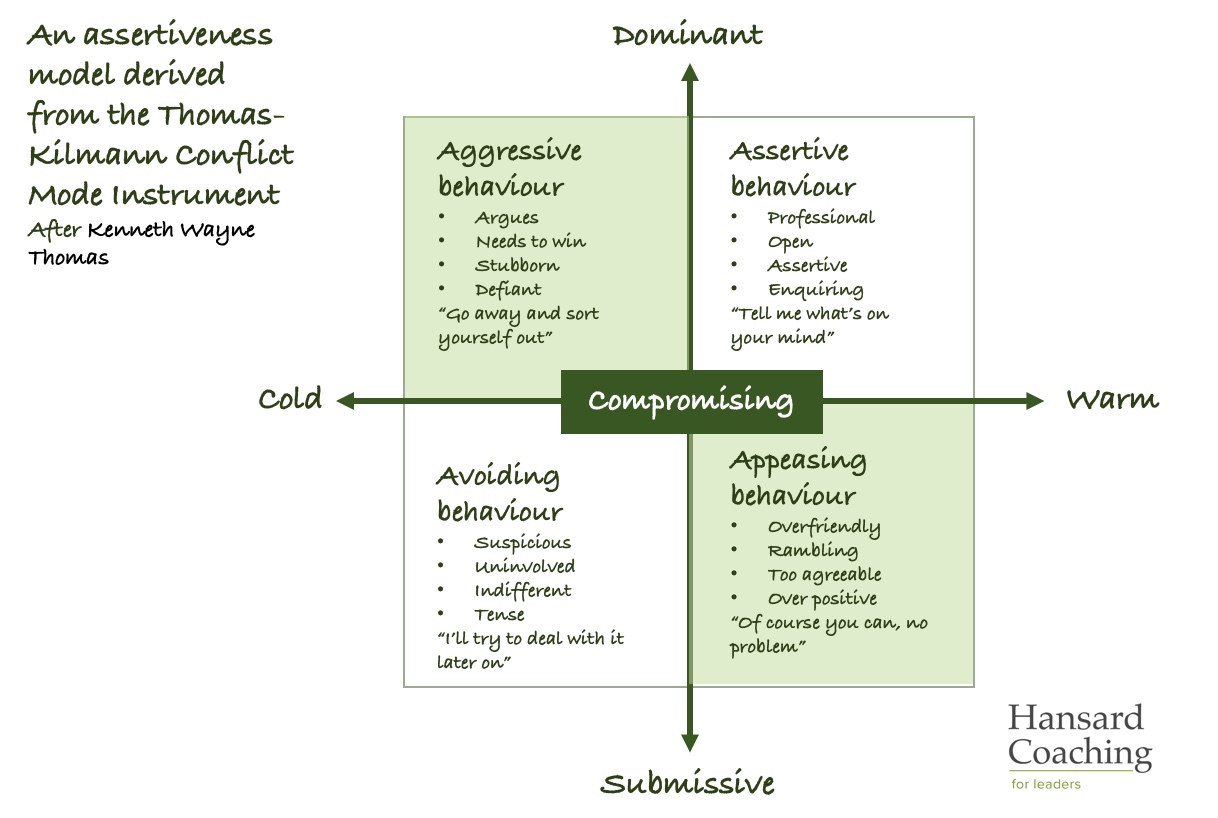
Influencing skills are crucial for effectively navigating conflicts and encouraging collaboration. One proven method for understanding and enhancing your approach to conflict is the Thomas-Kilmann Conflict Mode Instrument. By exploring its five distinct conflict-handling modes, you can sharpen your influencing skills and adopt strategies that best suit various situations.
The framework identifies five primary ways people handle conflict: Competing, Collaborating, Compromising, Avoiding, and Accommodating. Each mode reflects a different balance between assertiveness (meeting your own needs) and cooperativeness (meeting others’ needs). Mastering these modes and knowing when to apply each is key to influencing others effectively.
Collaborating: High Assertiveness, High Cooperativeness
Collaboration involves seeking solutions that satisfy all parties, fostering a win-win outcome. This mode requires active listening, open communication, and mutual respect. It is ideal when the goal is to build long-term relationships, solve complex problems, or create buy-in across teams. To influence through collaboration, focus on identifying common goals, facilitating open dialogue, and encouraging joint problem-solving. Although time-intensive, this approach can yield significant rewards by promoting trust and innovation.
Competing: High Assertiveness, Low Cooperativeness
The competing mode is all about standing your ground and asserting your perspective, even if it means overriding others’ concerns. It is most effective in situations where quick, decisive action is required or when the stakes are high. Leaders often use this approach to influence outcomes when they have critical information or need to make swift decisions and so really need to step in. However, overusing the competing mode can lead to alienation and reduce trust, so it should be employed selectively.

Compromising: Moderate Assertiveness, Moderate Cooperativeness
Compromising seeks a middle ground where each party gives up something to reach an agreement. This mode is practical when time constraints demand a quick solution, or when the issues are of moderate importance. It’s a valuable tool for influence when a balanced approach is needed, and neither side can fully achieve its objectives. The downside is that it may lead to suboptimal outcomes if overused, as parties might settle for expedient rather than effective solutions.
Avoiding: Low Assertiveness, Low Cooperativeness
Avoiding involves sidestepping conflict altogether, either by delaying or withdrawing from a situation. While it might seem counterintuitive as an influencing strategy, it can be effective when the issue is trivial or when emotions are running high. By giving time for tempers to cool, or allowing events to unfold without interference, you can influence outcomes subtly. In fact, I’ve seen this used really effectively by leaders who know they have a strong bargaining position yet don’t want to be seen as forcing an outcome. Note, though, that habitual avoidance can lead to unresolved issues, so it should be used with caution.
Accommodating: Low Assertiveness, High Cooperativeness
Accommodating prioritises the relationship over the outcome, often by yielding to others’ preferences. This mode is useful when maintaining harmony is more important than winning the argument or when the issue is more significant to the other party. It demonstrates empathy and strengthens relationships, enhancing your influence in situations where support and goodwill are critical. Overuse, however, can lead to perceptions of weakness or lack of conviction.
To sharpen your influencing skills using the framework, it’s essential to develop situational and self-awareness and adaptability. Begin by assessing your natural tendencies in conflict situations. Do you often compete, or are you more inclined to accommodate? Understanding your default mode helps identify areas for growth.
Next, consider the context. Different situations call for different approaches. A crisis may require a competing mode, while building a partnership may benefit from collaboration. Flexibility in shifting modes is key to maximising your influence. Additionally, practicing active listening, clear communication, and empathy across these modes can significantly enhance your ability to sway opinions and foster cooperation.
Ultimately, the Thomas-Kilmann Conflict Mode Instrument serves as a valuable tool for understanding conflict dynamics and refining your approach to influencing others. By strategically choosing your conflict-handling mode, you can navigate challenges more effectively, build stronger relationships, and achieve more meaningful outcomes in both professional and personal spheres.